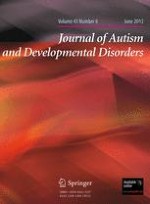01-06-2013 | Original Paper
What Do Repetitive and Stereotyped Movements Mean for Infant Siblings of Children with Autism Spectrum Disorders?
Gepubliceerd in: Journal of Autism and Developmental Disorders | Uitgave 6/2013
Log in om toegang te krijgenAbstract
Repetitive and stereotyped movements (RSMs) in infancy are associated with later diagnoses of autism spectrum disorder (ASD), yet this relationship has not been fully explored in high-risk populations. The current study investigated how RSMs involving object and body use are related to diagnostic outcomes in infant siblings of children with ASD (Sibs-ASD) and typically developing children (Sibs-TD). The rate and number of different types of RSMs were measured at an average of 15 months with follow-up diagnostic evaluations approximately 18 months later. While Sibs-ASD displayed higher rates of RSMs relative to Sibs-TD, rates did not differ according to diagnostic outcome in Sibs-ASD. However preliminary evidence suggests that qualitative differences in RSM type warrant further investigation as early diagnostic markers.
